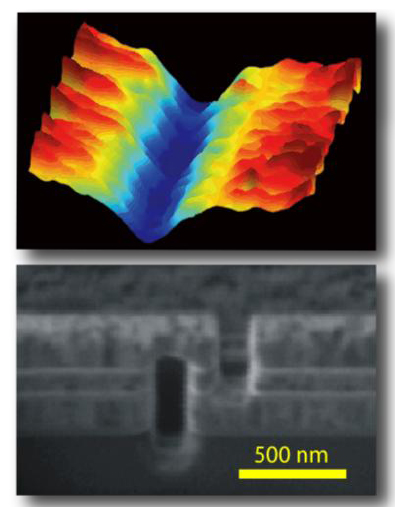
Professor of Materials Physics
Head of Department (Joint)
MEng Imperial College London
PhD University of Cambridge
Superconductivity, Magnetism, and Nano Spintronics
My research is concerned with investigating novel electronic states, which emerge at the interface between materials with radically different properties such as magnetism and superconductivity. This research involves precision growth of thin film multilayers, the fabrication of nanoscale heterostructure devices, and a wide spectrum of characterization techniques, including, for example, scanning tunneling microscopy and muon spectroscopy.
Superconducting Spintronics
Logic processing based on the spin of an electron (spintronics) can be faster than the conventional charge-based equivalent in semiconductor transistor technologies. However, generating and propagating spin currents is not low power because large charge currents are required at device inputs. Conventional superconductors cannot offer a solution since the pairs of electrons which carry charge have antiparallel spins and so supercurrents carry charge but not spin; at the interface between a superconductor and an inhomogeneous ferromagnet, we recently discovered a way to generate electron pairs with parallel rather than antiparellel spins (“triplet Cooper pairs”). Since triplet supercurrents carry spin in addition to charge and so could potentially be used in spintronics to create highly energy efficient logic. The aim of this research is to understand the fundamental properties of this new superconducting state and to explore the possibility of superconducting spintronic logic.
Magnetic Phenomena at Oxide Interfaces
This project involves probing oxide interfaces using diamond nanocrystal magnetic resonance imaging (diamond nano-MRI) in order to reveal the nature of low-dimensional magnetic phenomena with a nanometre spatial resolution and single-spin level sensitivity. Coherent control protocols developed for isolated and confined spins in diamond are being used to detect faint magnetic fields due to spin ordering near or at oxide interfaces. This level of investigation surpasses all previous measurements to date in terms of spatial resolution or degree of sensitivity, and aims to answer a number of open questions in novel magnetism over a wide range of temperatures.
Magnetism in rare earth / transition metal thin film multilayers
Exchange coupling at the interface between rare earth and transition metal ferromagnets results in an equilibrium antiparallel alignment of their moments. A non-parallel alignment of the transition metal layer moments in transition metal / rare earth multilayers can also result in the formation of artificial domain walls in the rare earth layers, which can be modified by changing the alignment of the transition metal layers. We are investigating how magnetic interactions are modified in nanoscale rare-earth / transition metal heterostructure devices via a combination of vibrating sample magnetometry, XMCD (in Stanford, SLAC), and micromagnetic simulations.
| (top) Tunneling density of states on a half-metal / superconductor bilayer at 4.2 K. (bottom) Micrograph of a nanopillar magnetic Josephson junction. |
 |
- CM Palomares García, A Di Bernardo, G Kimbell, M Vickers, F Massabuau, S Komori, G Divitini, Y Yasui, H Gyeol Lee, J Kim, B Kim, MG Blamire, A Vecchione, R Fittipaldi, Y Maeno, TW Noh, JWA Robinson, "Pulsed laser deposition of superconducting Sr2RuO4 thin films from single crystal Sr3Ru2O7 and pair suppression from mosaic-twist defects", Communication Materials 1, 23 (2020) DOI: 10.1038/s43246-020-0026-1
- A Di Bernardo, S Komori, G Livanas, G Divitini, P Gentile, M Cuoco & JWA Robinson, "Nodal Superconducting Exchange Coupling", Nature Materials 18, 1194–1200 (2019) DOI: 10.1038/s41563-019-0476-3
- S Komori, A Di Bernardo, AI Buzdin, MG Blamire, JWA Robinson, "Magnetic Exchange Fields and Domain Wall Superconductivity at an All-Oxide Superconductor-Ferromagnet Insulator Interface", Physical Review Letters 121, 077003 (2018) DOI: 10.1103/PhysRevLett.121.077003
- A Di Bernardo, O Millo, M Barbone, H Alpern, Y Kalcheim, U Sassi, A Ott, D De Fazio, D Yoon, M Amado, AC Ferrari, J Linder, JWA Robinson, "p-wave triggered superconductivity in single-layer graphene on an electron-doped oxide superconductor", Nature Communications 8, 14024 (2017) DOI: 10.1038/ncomms14024
